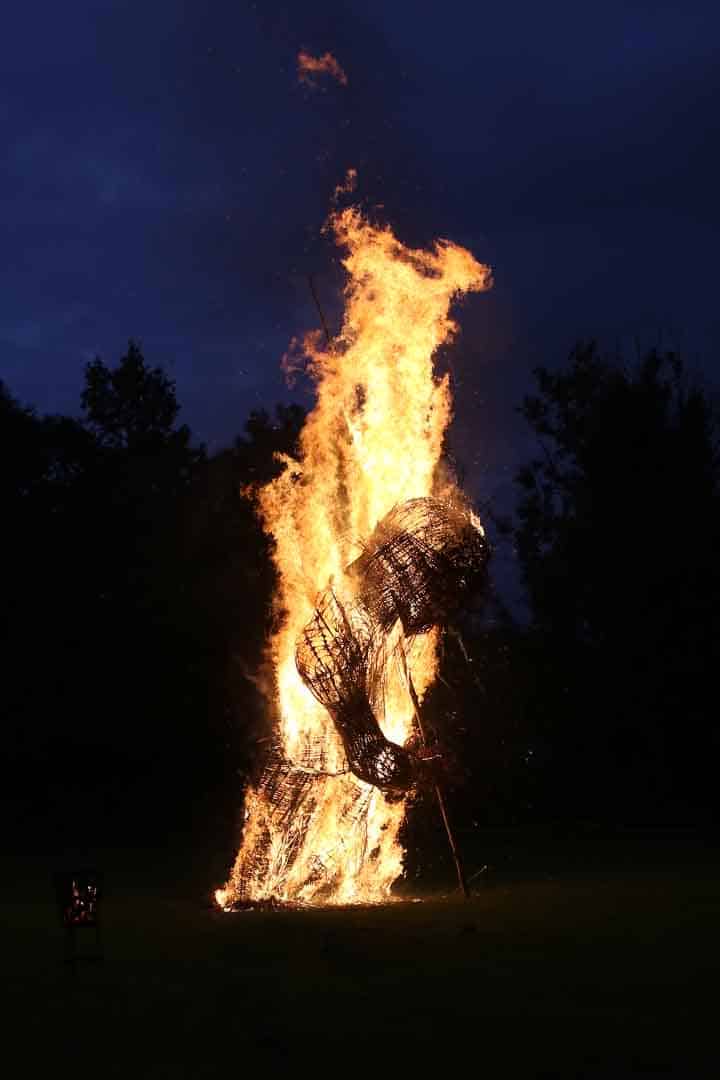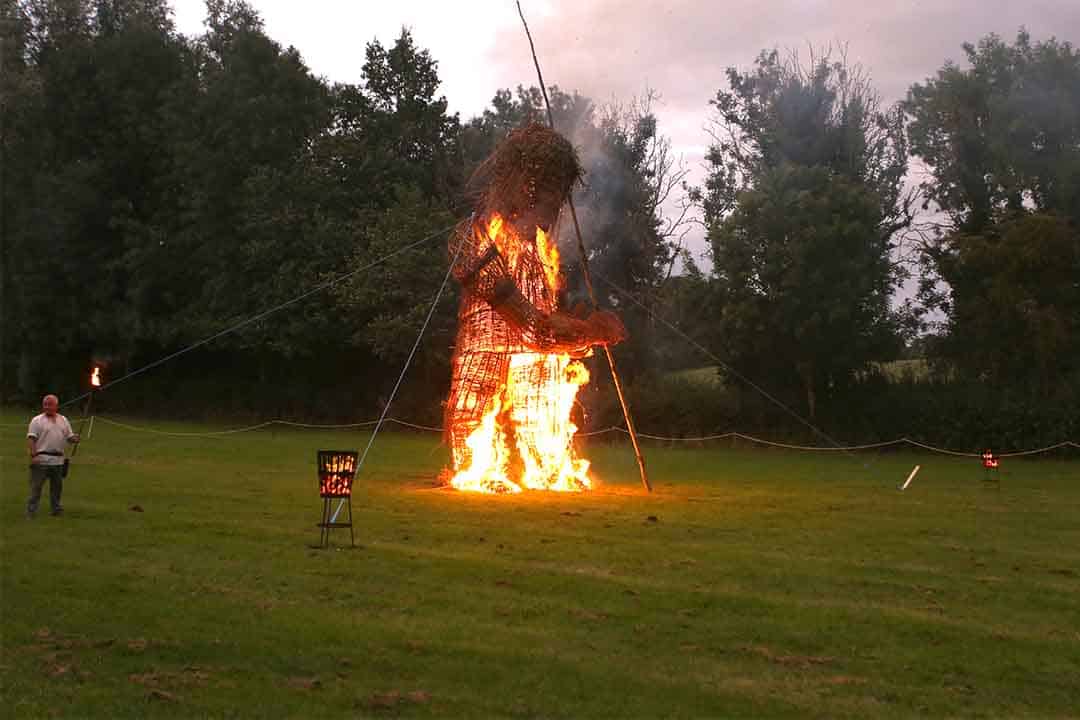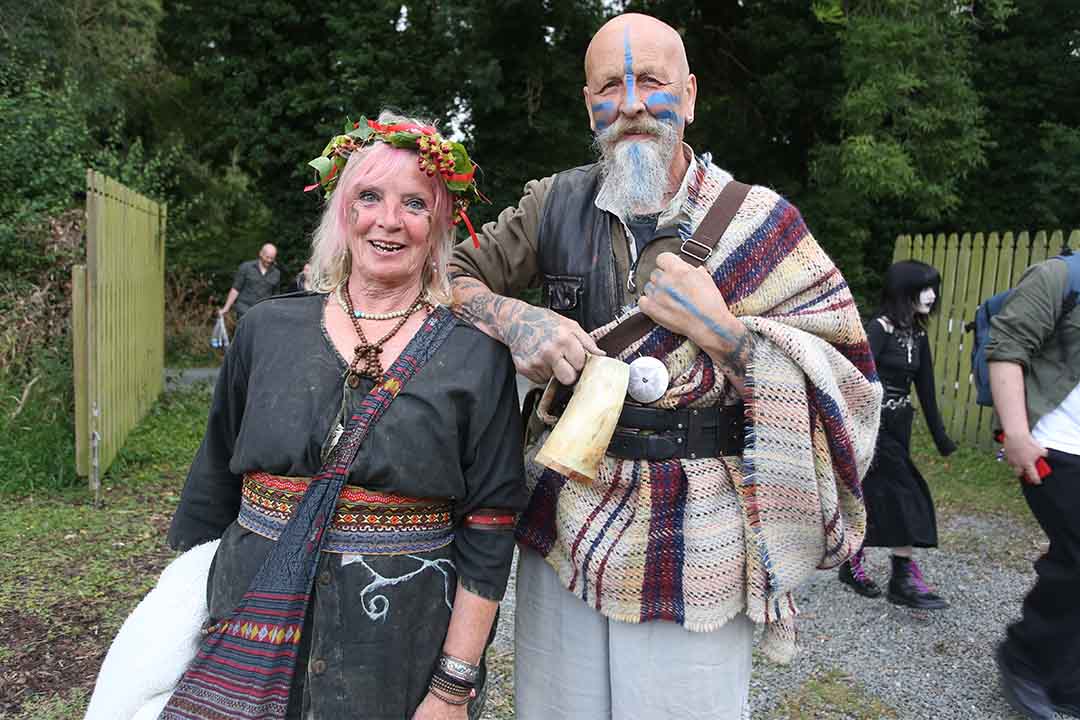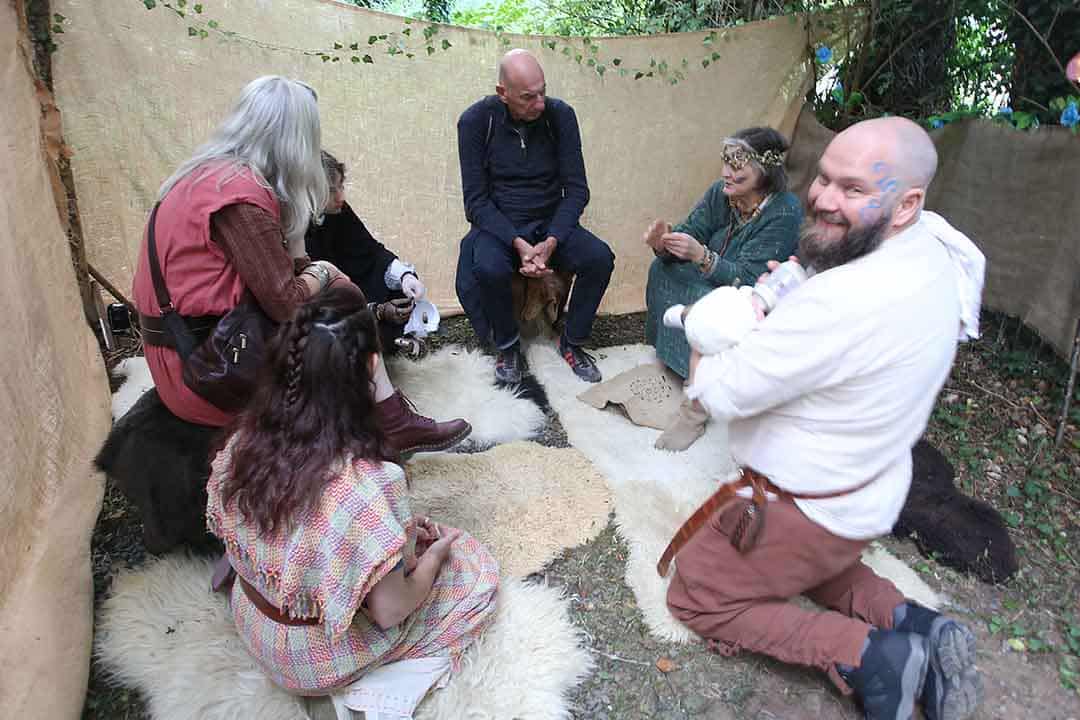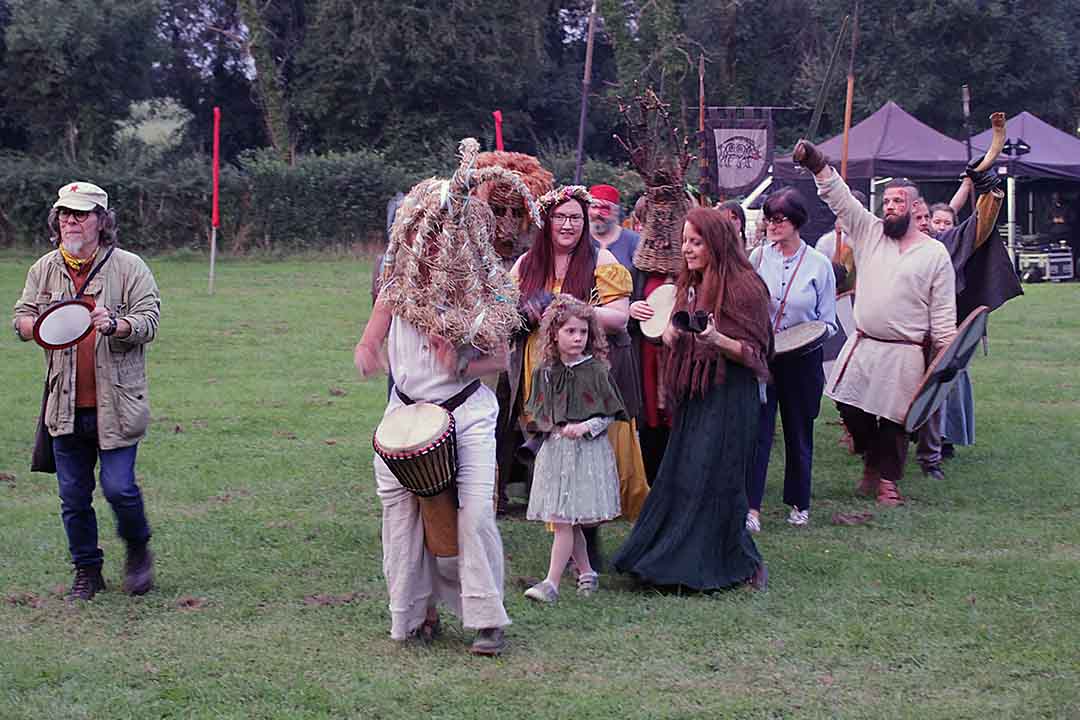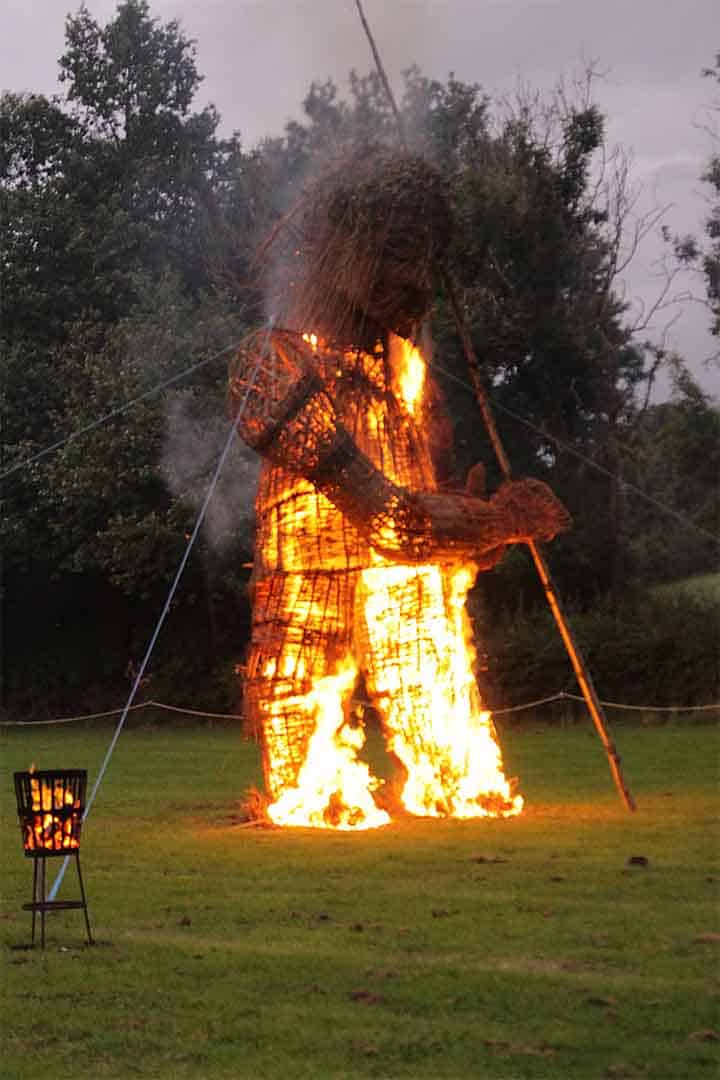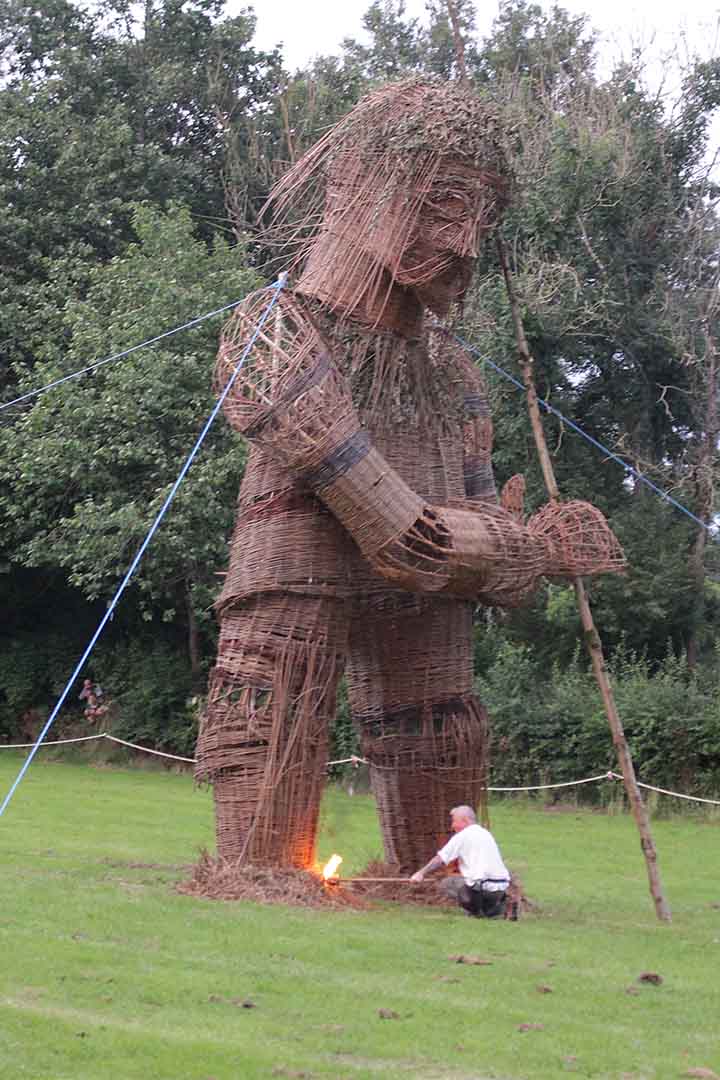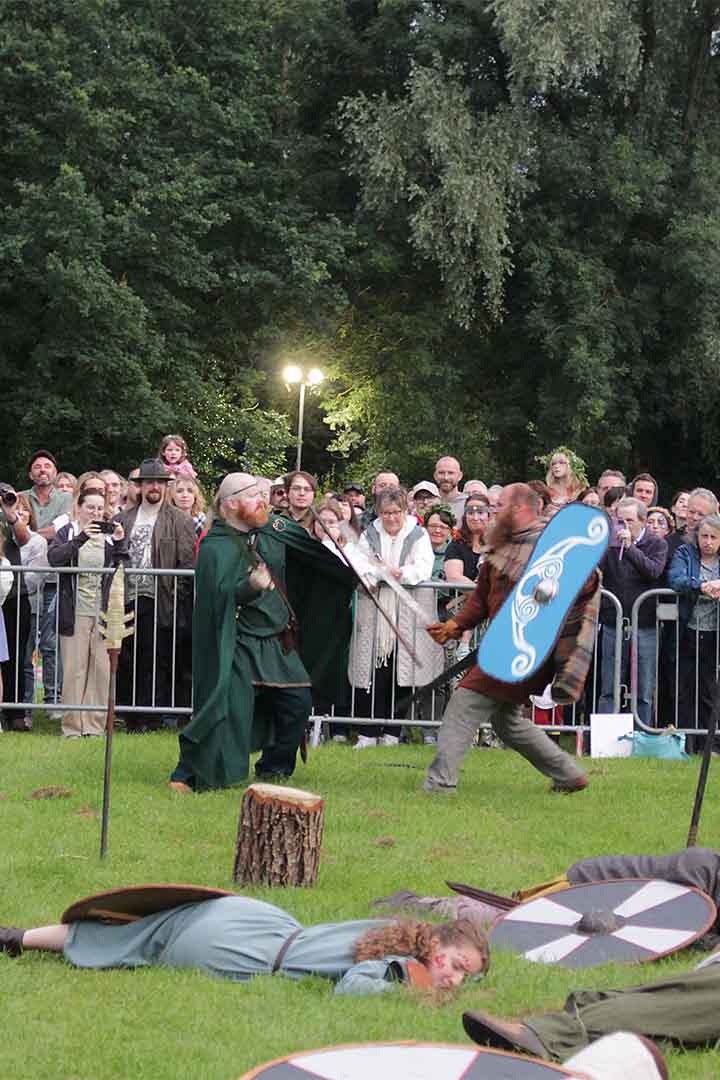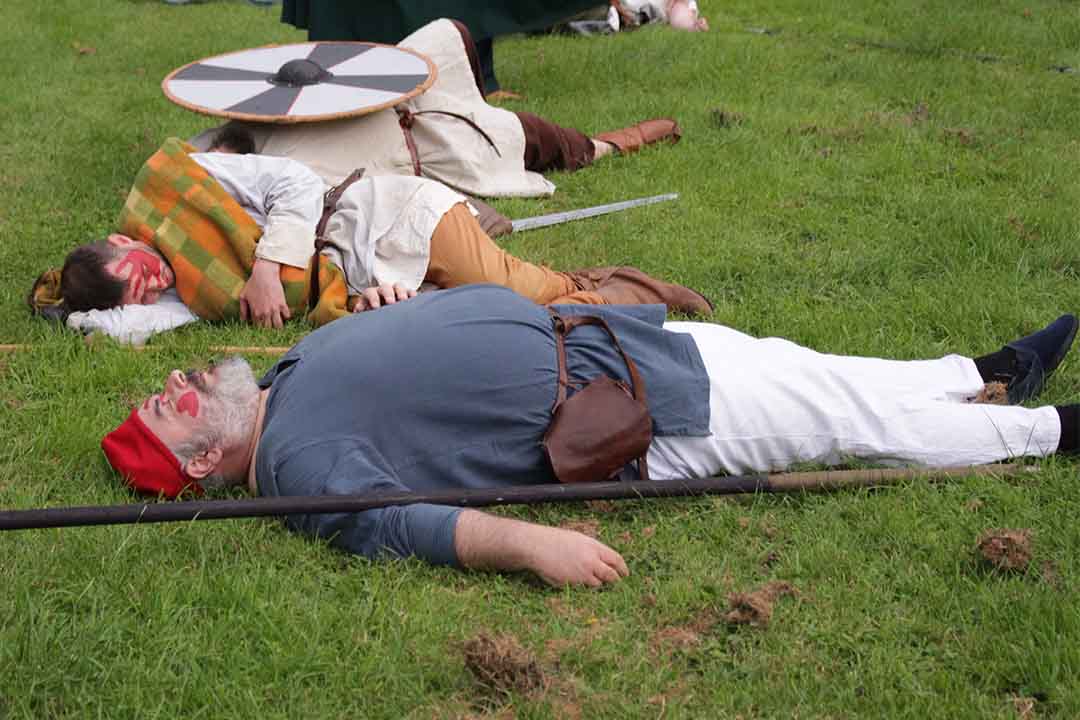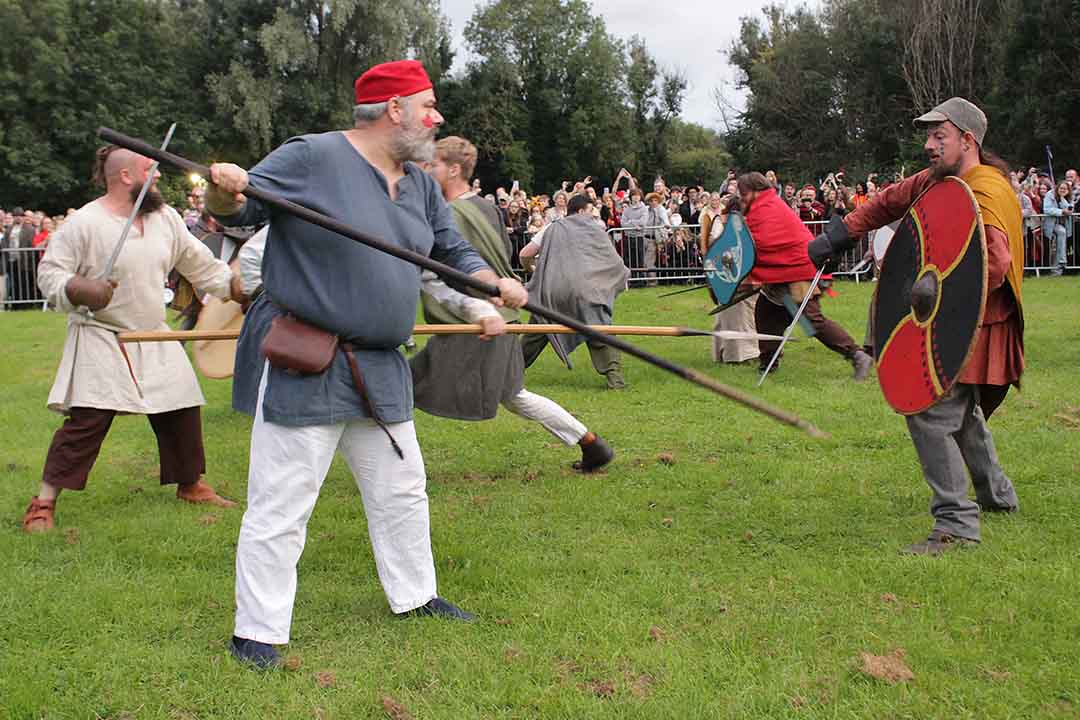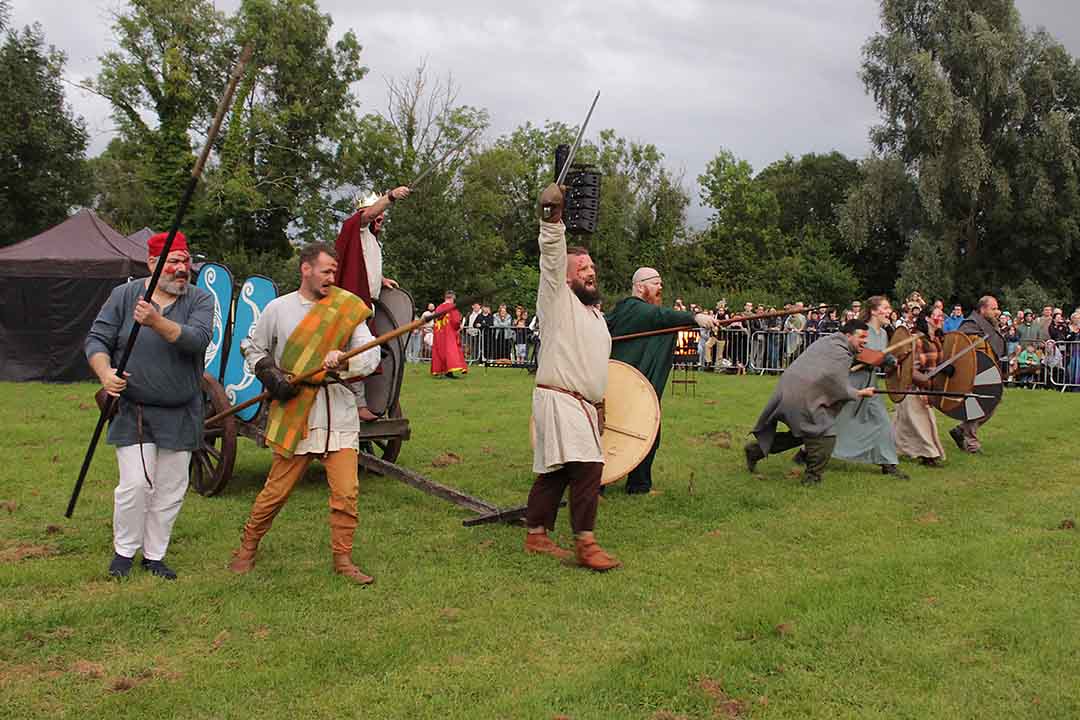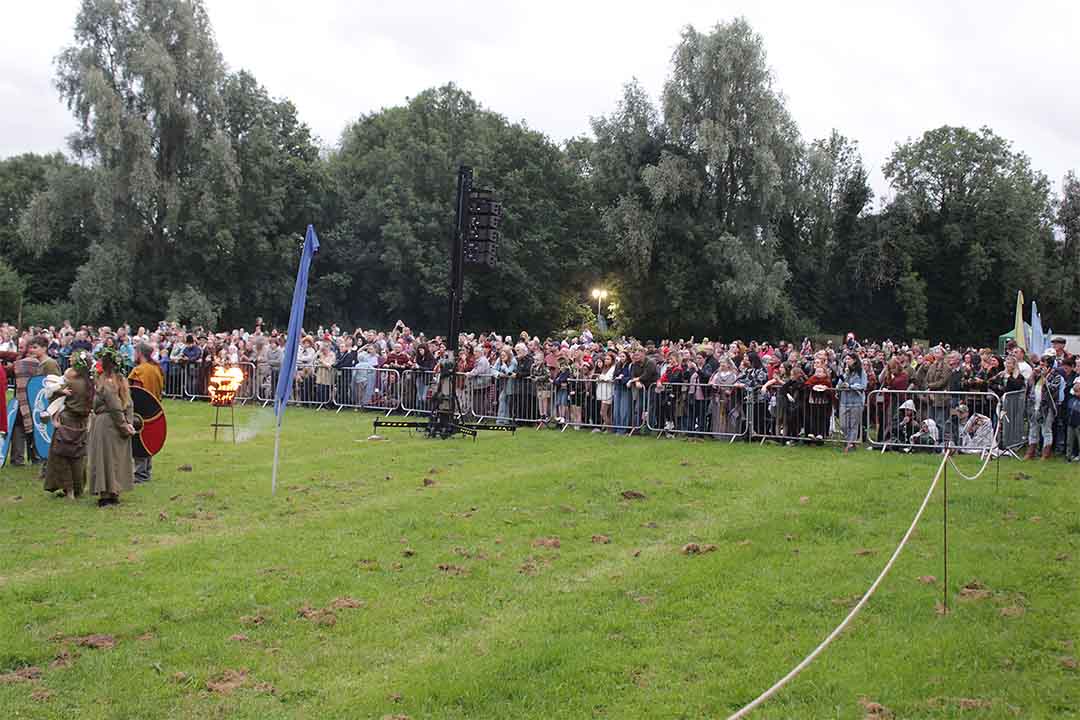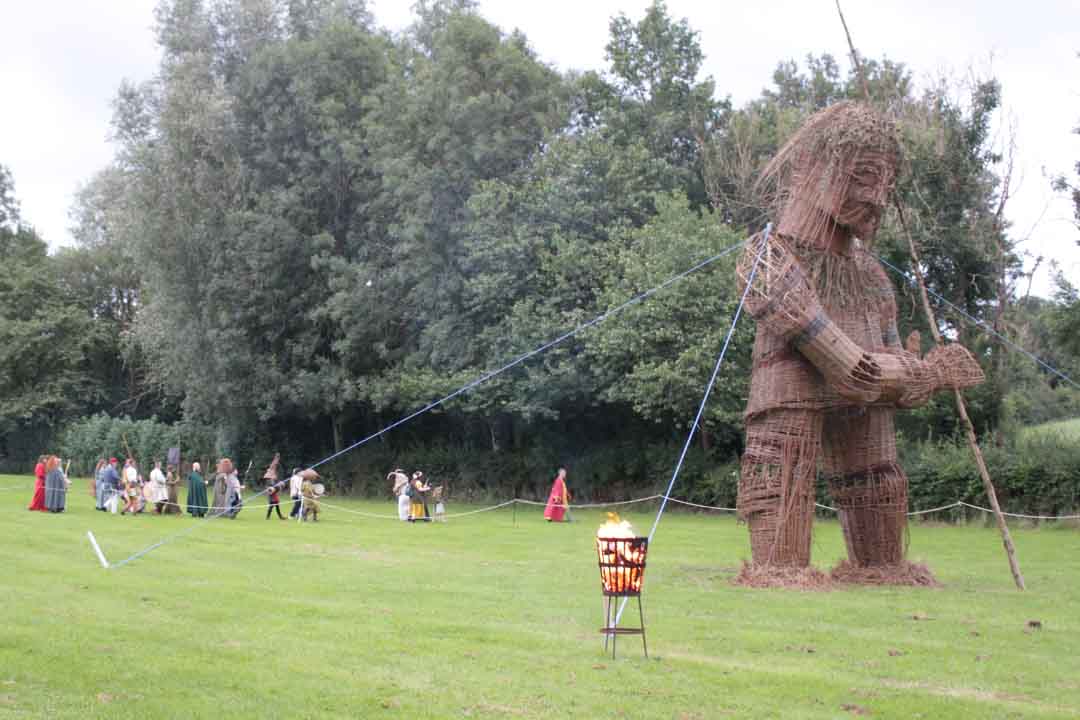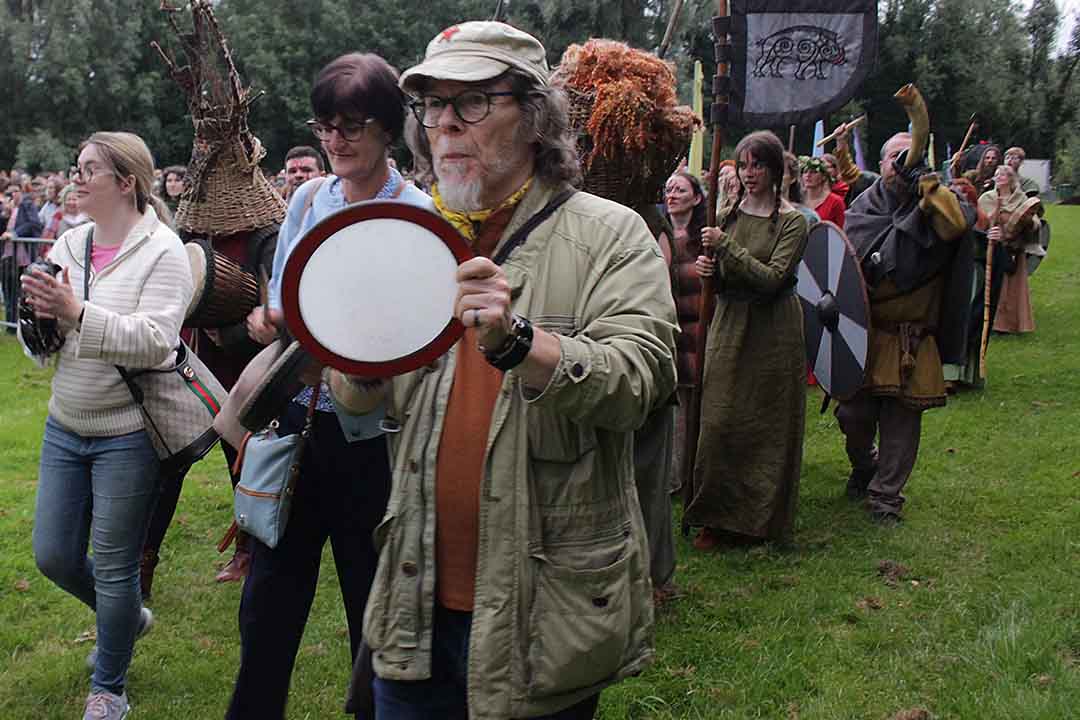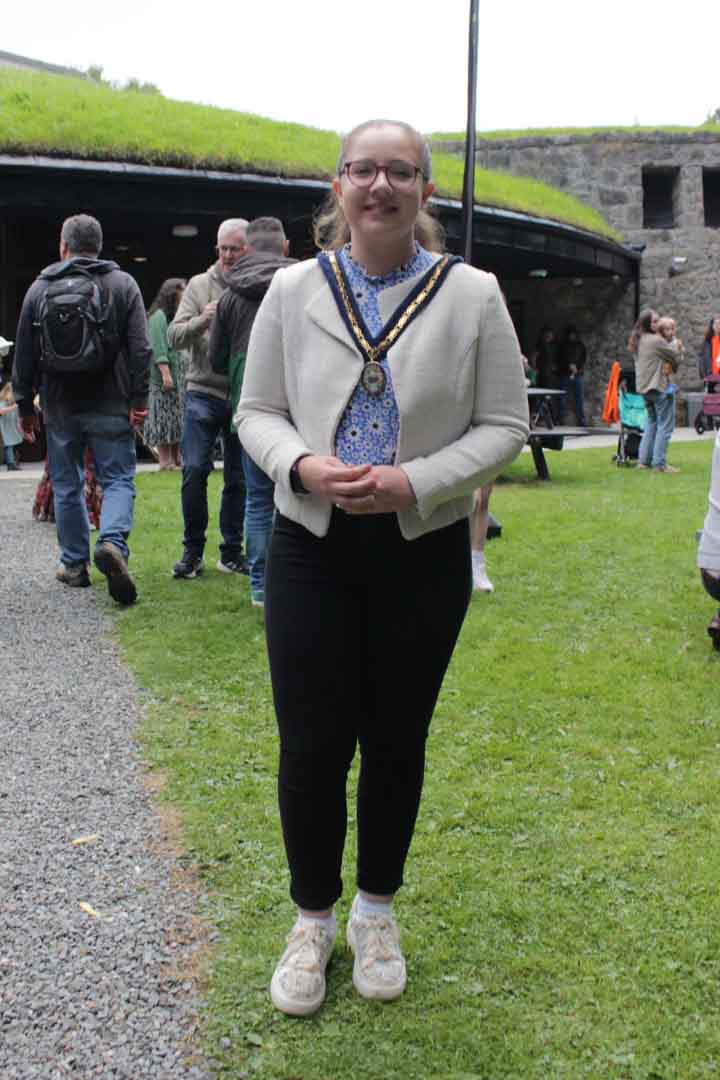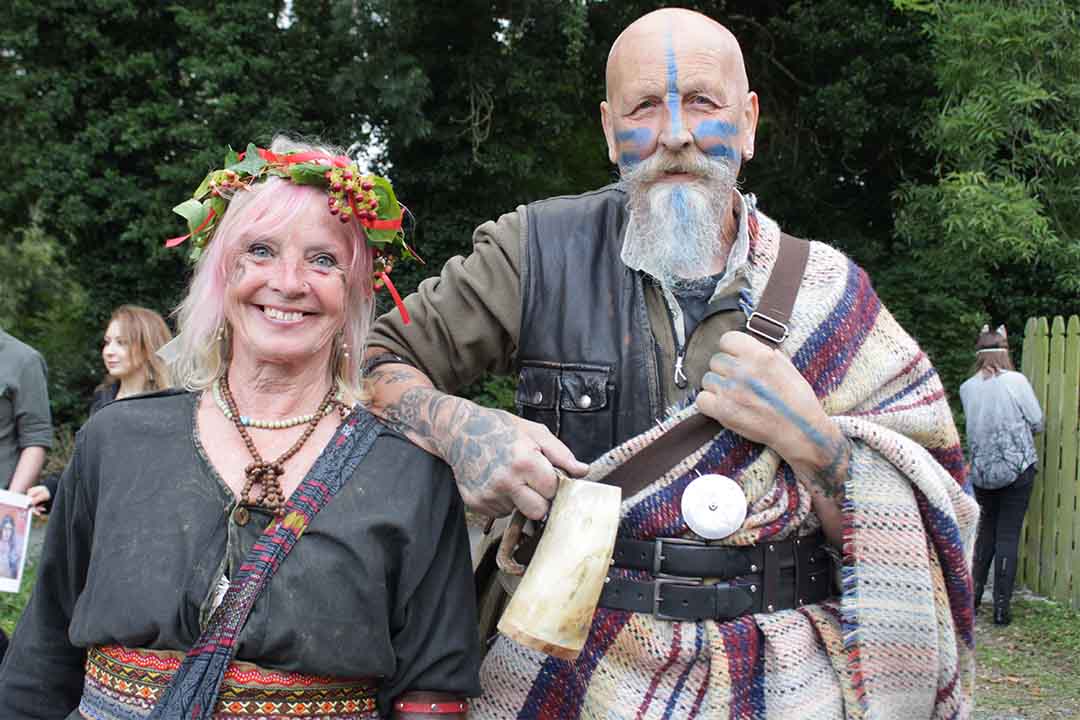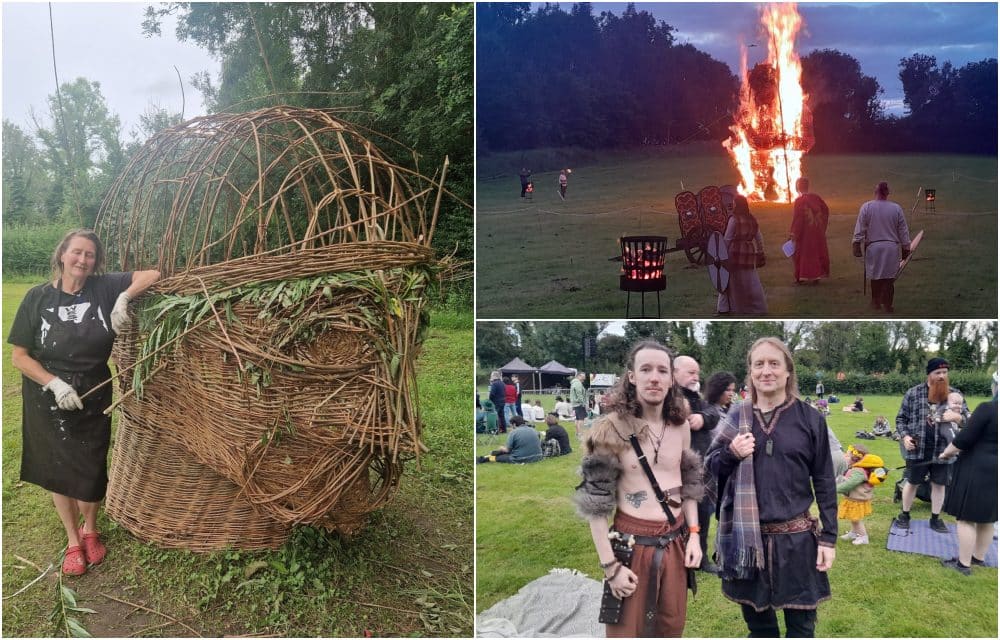
The ancient Celtic festival of Lughnasa was celebrated at Navan Fort in Armagh on Saturday, as a twenty-five-foot wicker man sculpture was set on fire in front of a crowd of hundreds.
Named after the Celtic god Lugh, the festival marks the beginning of the harvest season and has been celebrated in Ireland since the Middle Ages.
The event, hosted by the Navan Centre in Armagh, showcased what life would have been like for people living in medieval Ireland.
Many of those in attendance were interested in Celtic history, spirituality, and paganism.
Graham, an attendee from England, explained that he had travelled to the event because he was a practising pagan. “I was initiated into witchcraft when I was fourteen,” he said. “I’ve been involved in Druidry and different magical traditions… I’ve always celebrated the different (Celtic) festivals, including this one.”
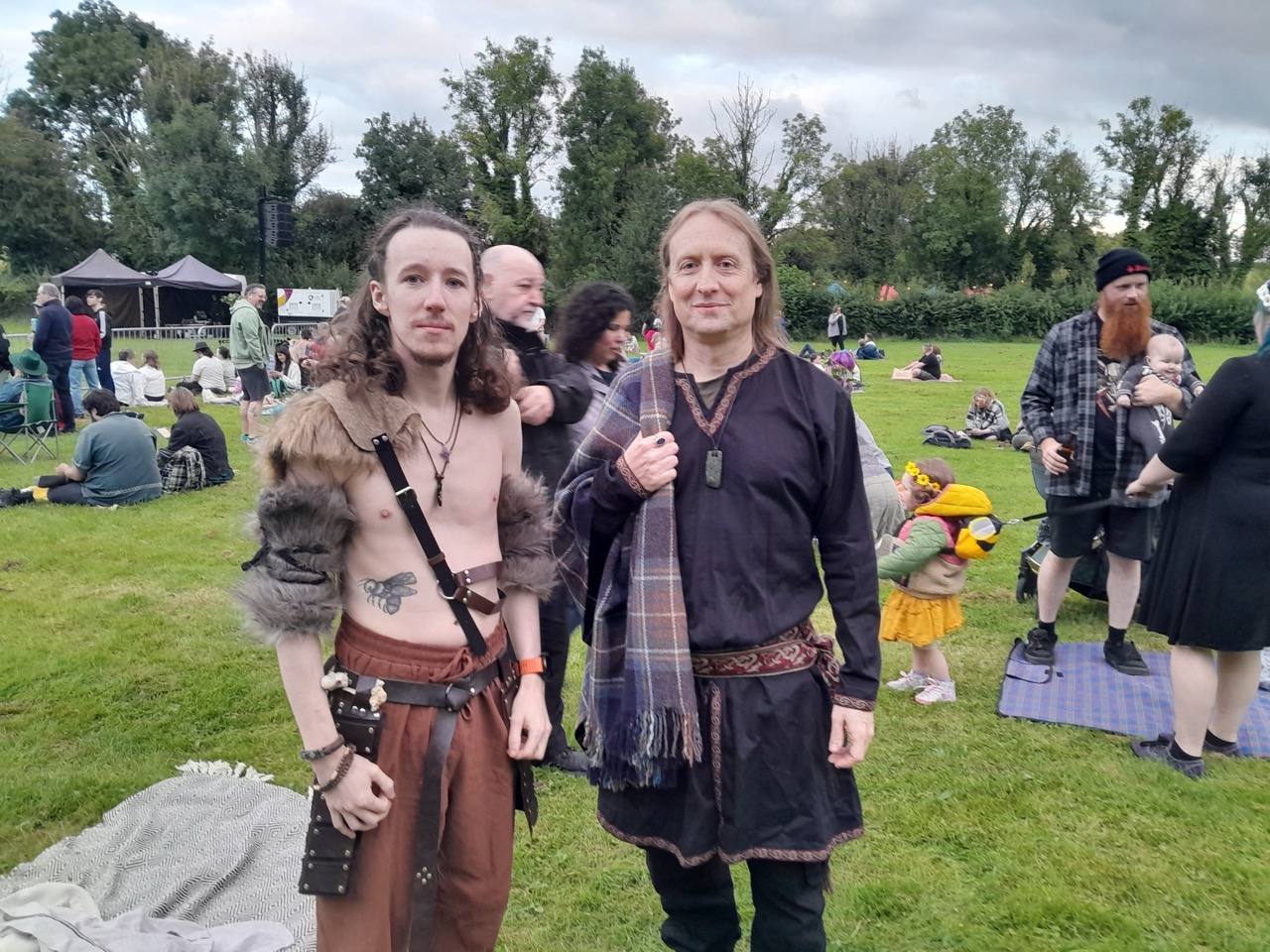
Adam and Graham
Unlike followers of the major religions, modern pagans do not have an agreed-upon set of beliefs. Yet, according to Graham, a “reverence for nature is the primary thing” which defines them.
Majella, attending the event with her family, also spoke about how her spiritual beliefs had been influenced by nature.
“I just have no time for mainstream religion,” she said. “I’m just very nature-focused. I’m at my happiest when I’m outside.”
Her friend Allison, echoing her sentiments, remarked: “I like the celebration of Lughnasa and that it’s a pre-Christian religion. I like its connection to nature.”
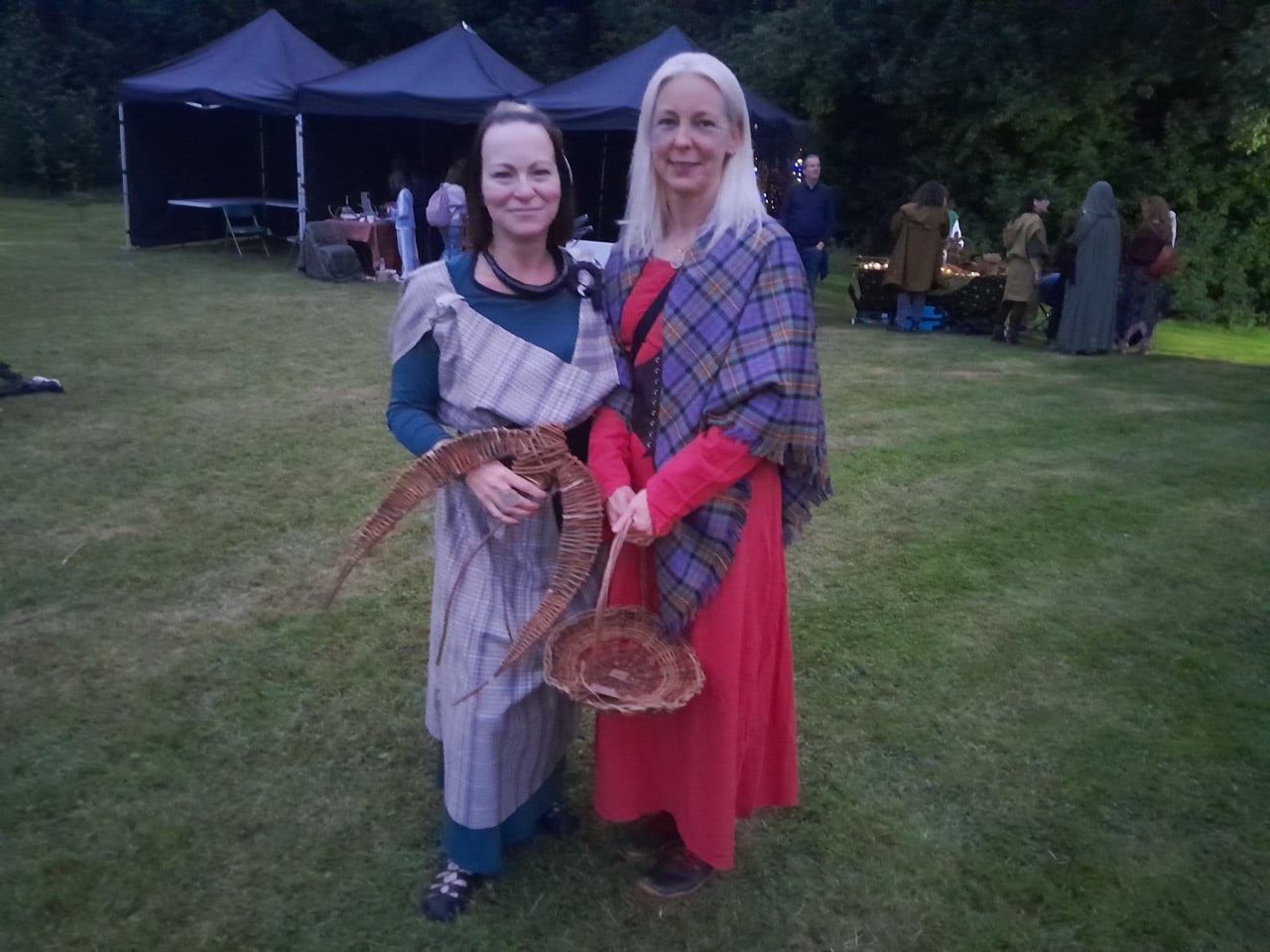
Allison and Majella
Whilst the event showcased musicians, craftspeople, and historical re-enactments, the highlight was undoubtedly the burning of a huge wicker man sculpture.
The burning of a wicker man is not historically linked to traditional Lughnasa celebrations in Ireland. However, some records do indicate that Celtic pagans may have occasionally constructed large wicker statues. They would then place humans and animals inside and burn the structures.
In modern times, burning wicker man statues became popular following the release of the 1973 horror film The Wicker Man.
The wicker man sculpture for the event was designed and constructed by Heather McDermott, an employee of the Navan Centre and an experienced willow weaver.
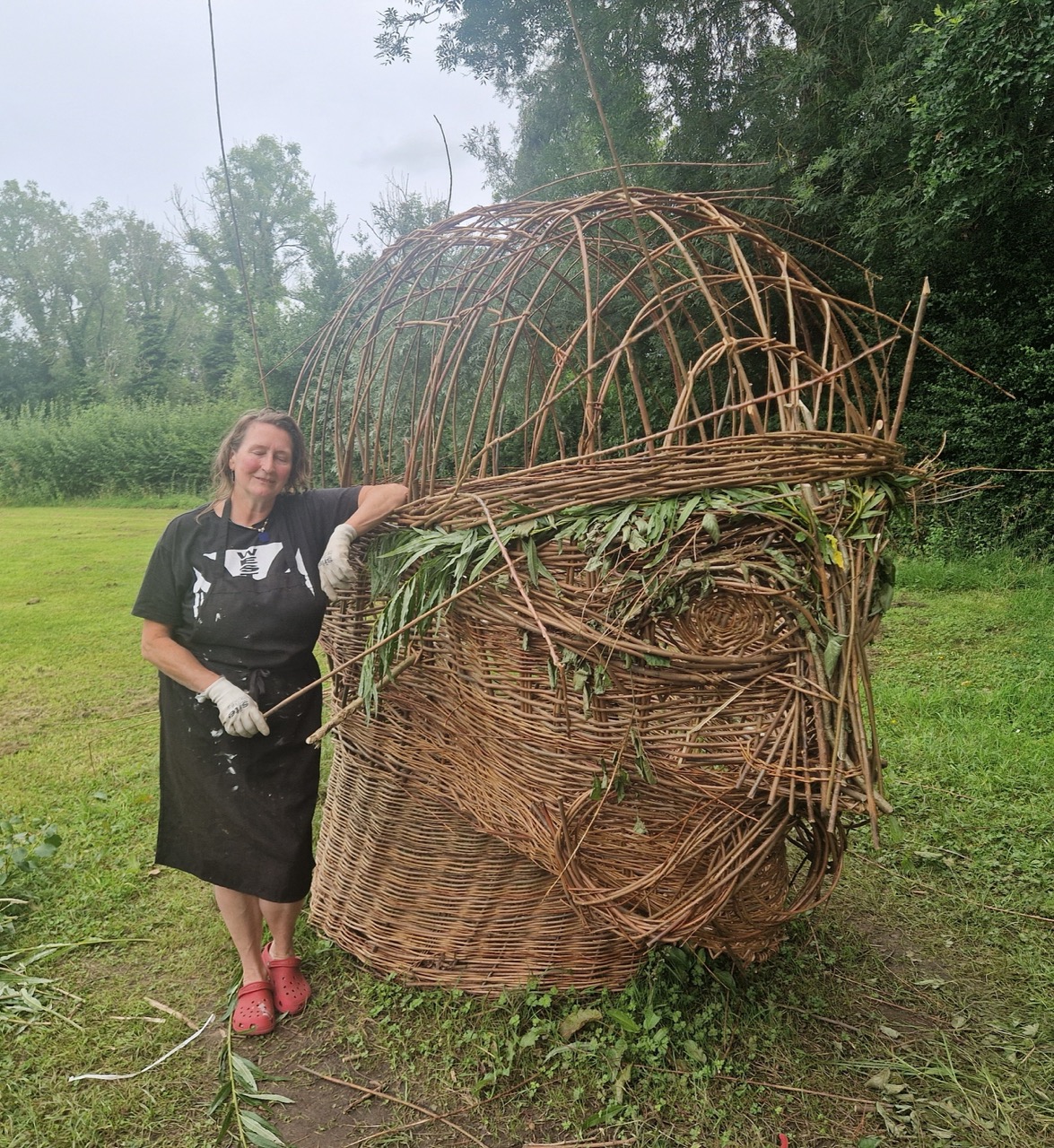
Heather McDermott
This year was not the first time Heather had built the wicker man for the Lughnasa celebrations.
Explaining what first led her to do so, she said: “One year a bizarre thing happened; the wicker man didn’t burn… so the following year I felt I would be able to build the wicker man… I didn’t want that to happen again.”
Heather constructed the wicker man using willow branches, a material she loves working with.
“It’s the most wonderful, useful plant,” she said. “It’s sustainable, it’s easy to get, I can grow my own — that’s all I need.”
Whilst she did most of the work herself, Heather set up a free training programme where she taught aspiring willow weavers some essential skills.

Once they mastered the basics of weaving, they helped her to construct the wicker man.
“We couldn’t do it without our amazing, passionate willow weavers,” Heather said.
She has also noticed that in recent years people have become more interested in willow weaving because “they want to make their own stuff. They don’t want to be adding to the mountain of waste that’s going into landfill.”
Building the wicker man took months, with Heather beginning work on it in April.
She explained how the sculpture was constructed in anatomical components.
“The legs are ten feet, the arms are ten feet, and the head is about six feet. We lie them all on the ground… and then we join it all together.”

Yet while some may have been interested in the sculpture from a historical or spiritual point of view, Heather viewed it primarily as a piece of art.
“It takes up a great space on the horizon,” she said, “and then it’s gone and there’s nothing left but ashes.”
For Heather, however, the destruction of her sculpture is not something to be mourned; it is its defining artistic quality.
“The visual spectacle” of the wicker man burning, she said, “stays in your memory so much longer than physical possessions that you might hold in your hand.”


Additional photos by Vincent Loughran
